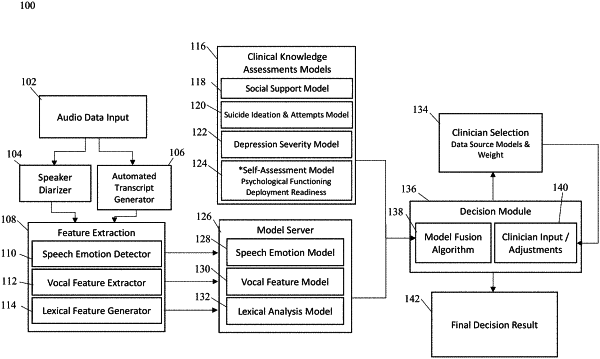| CPC A61B 5/165 (2013.01) [A61B 5/167 (2013.01); A61B 5/4803 (2013.01); A61B 5/7264 (2013.01); A61B 5/7275 (2013.01); G10L 15/02 (2013.01); G10L 25/63 (2013.01); G10L 25/66 (2013.01)] | 30 Claims |

|
1. A method for determining a PTSD likelihood in a patient comprising:
receiving, at an electronic device, audio input data from a patient;
determining one or more audio input indicators based on the audio input data, wherein each audio input indicator of the one or more audio input indicators represents a likelihood of a positive PTSD diagnosis based on the audio input data;
receiving, at the electronic device, clinical assessment data from the patient, wherein the clinical assessment data comprises one or more of social support data, suicide ideation and attempts data, depression severity data, or self-assessment data;
determining one or more clinical assessment indicators based on the clinical assessment data, wherein each clinical assessment indicator of the one or more clinical assessment indicators represents a likelihood of a positive PTSD diagnosis based on the clinical assessment data;
combining, at a decision module of the electronic device, the one or more audio input indicators and the one or more clinical assessment indicators using a heuristic model; and
determining, by the heuristic model at the decision module of the electronic device, the PTSD diagnosis likelihood in the patient based on the audio input data and the clinical assessment data.
|